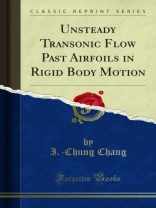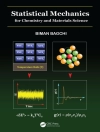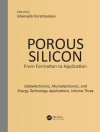Whilst the greatest effort has been made to ensure the quality of this text, due to the historical nature of this content, in some rare cases there may be minor issues with legibility. We begin our discussion with a brief survey of the behavior of flows past airfoils; when a conventional symmetric airfoil accelerates from subsonic speed to supersonic speed the flow pattern usually develops in the manner shown in Figure 11. As the flight speed of the airfoil reaches the critical speed, the local flow speed equals the local sound speed. Beyond the critical speed, a supersonic region appears on the airfoil which is usually terminated by a nearly normal shock through which the flow speed jumps from super sonic to subsonic. With a further increase in the flight speed, the shock moves aft and the size of the supersonic region and the shock strength both increase. If the pressure jump through the shock is sufficiently large, separation of the boundary layer occurs. This shock induced separation starts when the local Mach number, the ratio of local flow and sound speeds, just upstream of the shock is about to When the boundary layer downstream of the shock separates.
I.-Chung Chang
Unsteady Transonic Flow Past Airfoils in Rigid Body Motion [PDF ebook]
Unsteady Transonic Flow Past Airfoils in Rigid Body Motion [PDF ebook]
购买此电子书可免费获赠一本!
语言 英语 ● 格式 PDF ● ISBN 9780259710431 ● 出版者 Forgotten Books ● 发布时间 2019 ● 下载 3 时 ● 货币 EUR ● ID 5573123 ● 复制保护 Adobe DRM
需要具备DRM功能的电子书阅读器












